Rainwater Harvesting & Zero Energy Costs: Kerala Architect Builds Perfect Home!
Covering an area of 4,250 square feet, this modern home stands out like no other!
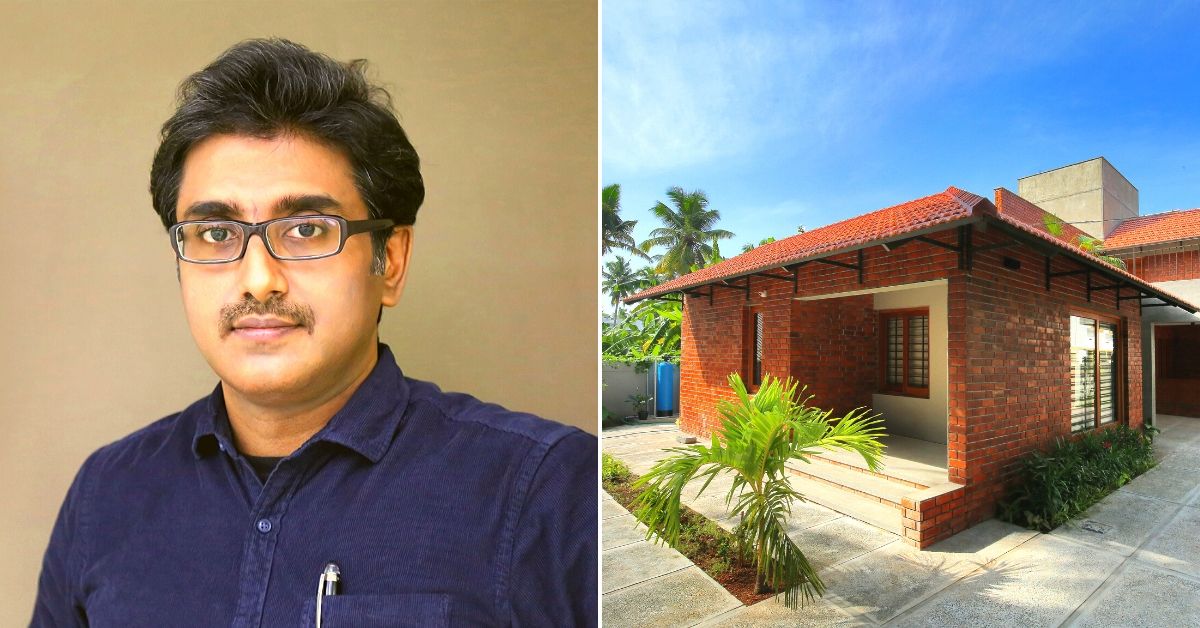
Exposed brick architecture possesses a distinctive aesthetic quality. On the outside, it invokes a feeling of both familiarity and warmth. And this is precisely what Srijit Srinivas, a Thiruvananthapuram-based architect, envisioned when constructing ‘The Brickhaus’ for his client in the city. Covering an area of 4,250 square feet, this modern home stands out for not only its imaginative design, intelligent utilisation of space and natural light, but also the eco-friendly features embedded into the structure.
Commissioned in 2017, the structure was completed earlier this year.
“Brick in itself is a beautiful material. Each brick is different too. Usually people make houses with bricks and plaster them to cover up their imperfections. They go for polluting primers and several coats of paints that pollute the environment. Why should we pollute the environment? We wanted the house itself to become a piece of art in brick. Only a very well designed house having form, scale and proportion would look good in exposed brick,” says Srijit Srinivas in conversation with The Better India (TBI).
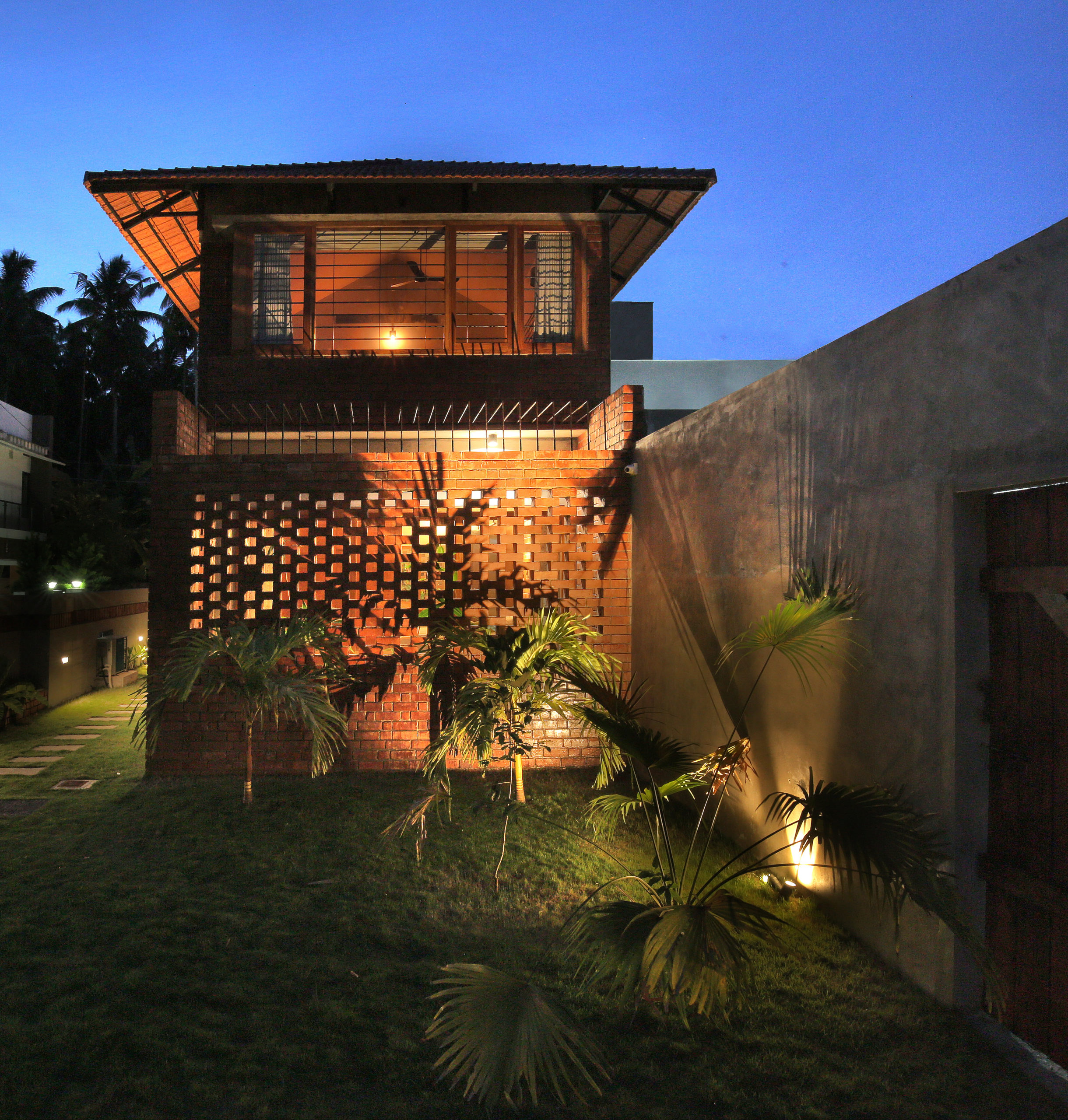
Laurie Baker, a pioneer of conservation (green) architecture in India, was a keen proponent of exposed brickwork who once said “such unique and characterful creations should not be covered with plaster.”
Although Baker’s structures did have some construction-related issues because of certain detailing and execution concerns, what he did was inspire a generation of architects to utilise not just exposed brick but link it to more substantial ideas, philosophies and principles of sustainable architecture.
“Growing up, I studied at the Loyola School in Thiruvananthapuram. On campus, Laurie Baker had built the beautiful Loyola Chapel, which remains a wonderful example of brick construction. I would go there often with a few of my friends during break time just to get a feel of the space even at an age we knew nothing about the technicalities of architecture,” he recalls.
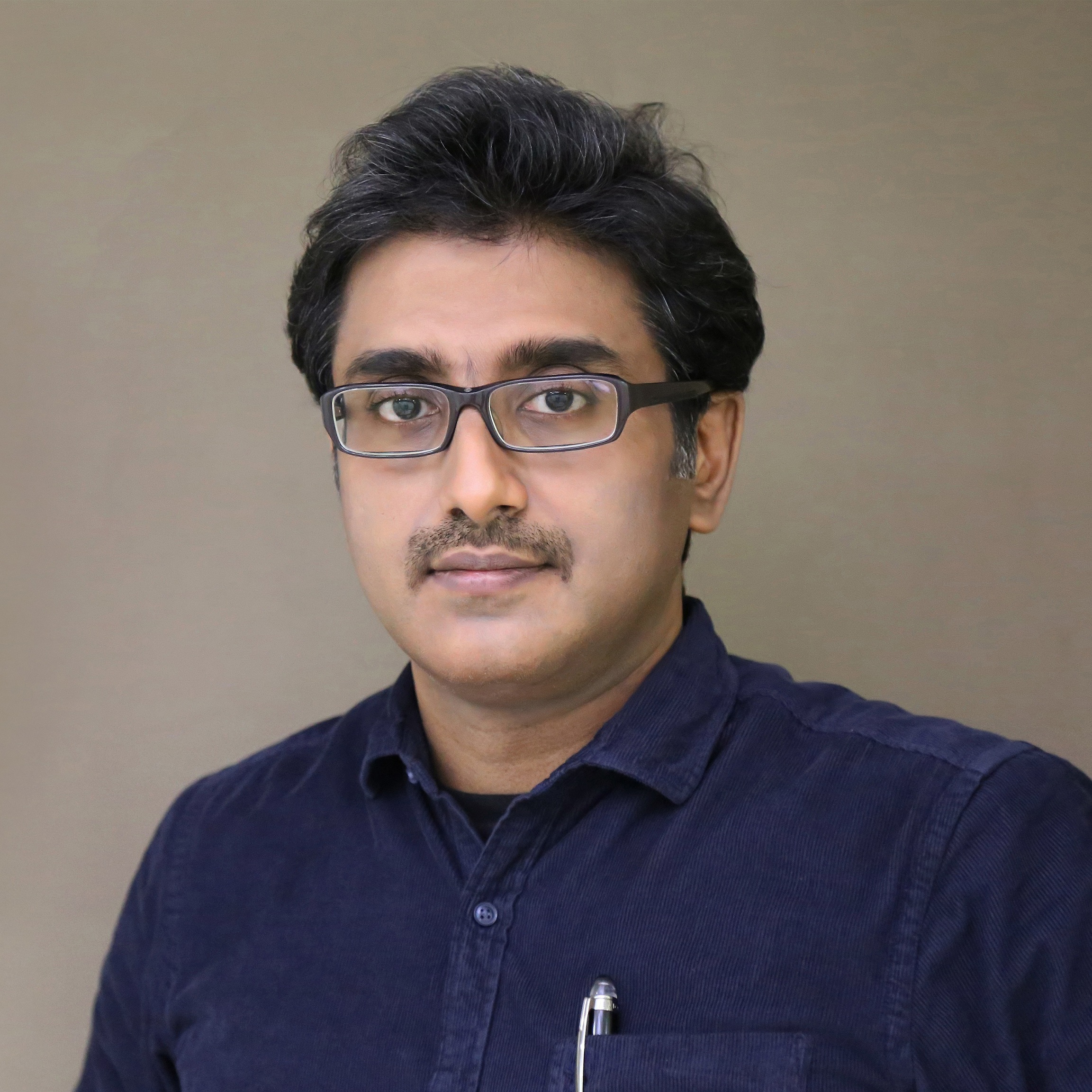
Brick Structures
Despite its soothing texture, warmth and character, brick structures come with their own set of concerns. The primary being the potential for water seepage through the mortar joints.
“Srinivas and his team added Pidicrete, a waterproof compound to the cement mortar to prevent any seepage. Even during construction, there were heavy rains. But The Brickhaus still did not experience any seepage. Another important construction practice was applying Stone Clear (done usually over stone, granite, etc.in temples) on brick and over pointed mortar joints instead of paint for sheen and to prevent any probable seepage,” says this detailed description in the Architectural Digest publication.
“Stone Clear is applied so that brick will retain its look. This is a clear coat protecting it from rain,” Srinivas tells TBI.
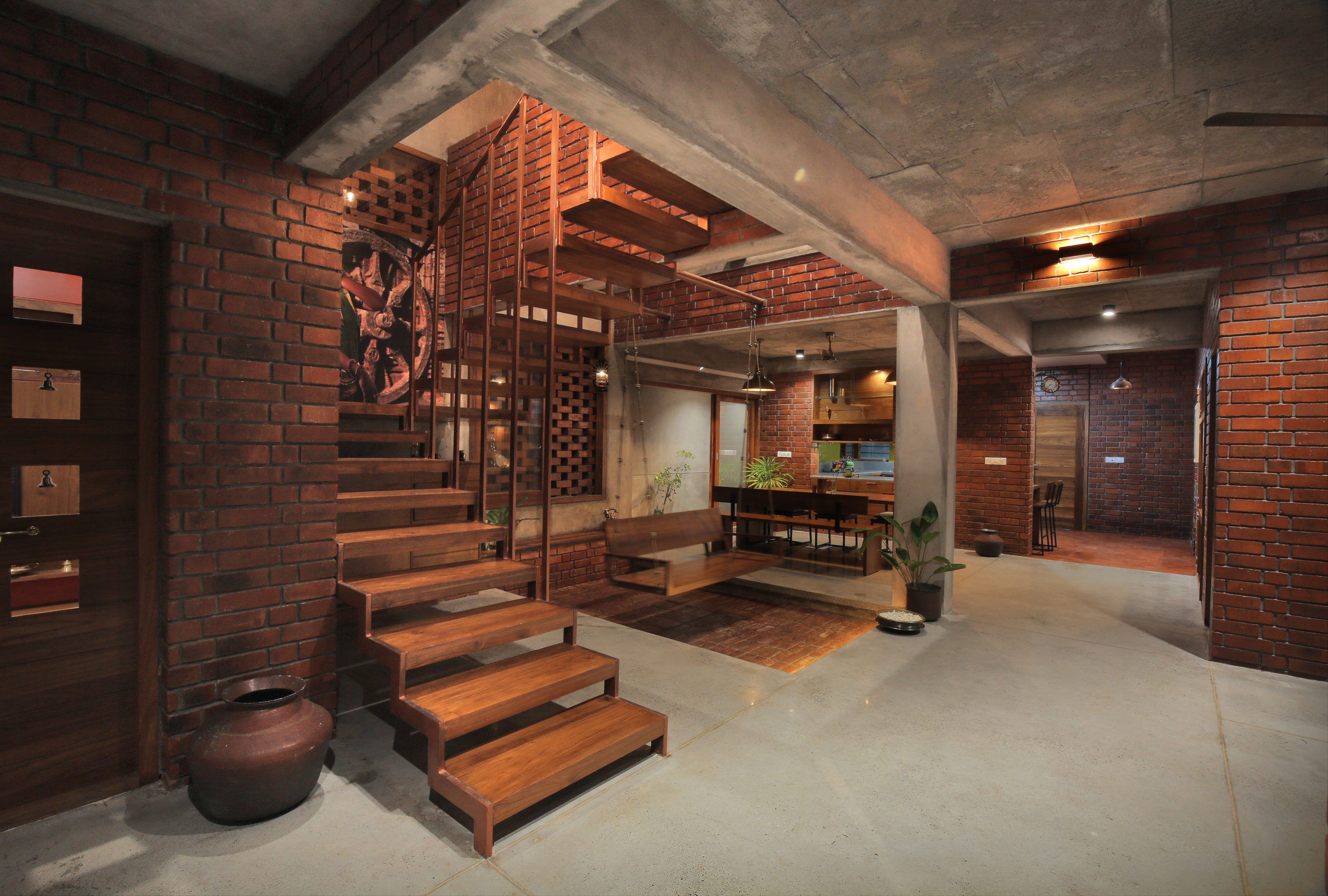
“The Brickhaus is filled with several nooks, corners and jali designs that allow plenty of sunlight inside the home. The gardens and the lotus pond too work together to bring in light as well as open up the building to glimpses of the world outside. Additionally, the skylight creates an ever-changing pattern of light throughout the day which gives the inmates, a unique experience at different times of the day,” adds Architectural Digest.

However, the standout element of this structure remains its adherence to the environment.
“This is a Net Zero Energy building where the total amount of power consumed by the house’s inmates for various activities is equal to the power produced by the house. This is thanks to the ‘Grid Tied’ power system we helped set up with a 5 kWp of installed on-site solar capacity that produces 20 units of electricity per day. The surplus is fed into Kerala State Electricity Board’s (KSEB) main power grid. At night, power is supplied to the house by the KSEB mains power grid. The owner pays nothing at all for electricity in the house,” says Srinivas to TBI.

Meanwhile, rainwater from the roof and rear terrace is filtered and let into the well to replenish the underground water table. However, this water is also treated, according to Srinivas.
“Turbidity is removed with pressure sand filter. Iron is removed with an iron removal filter. Odour, however, is taken care of by an activated carbon filter. In many cities, the public water supply cannot always be trusted. So, we need other sources. Well water can dry up, and that’s why we set up this rainwater recharge system as well. In a city like Thiruvananthapuram, the groundwater contains chemicals and isn’t suitable for drinking. So, we went for the purification system as explained earlier,” he claims.
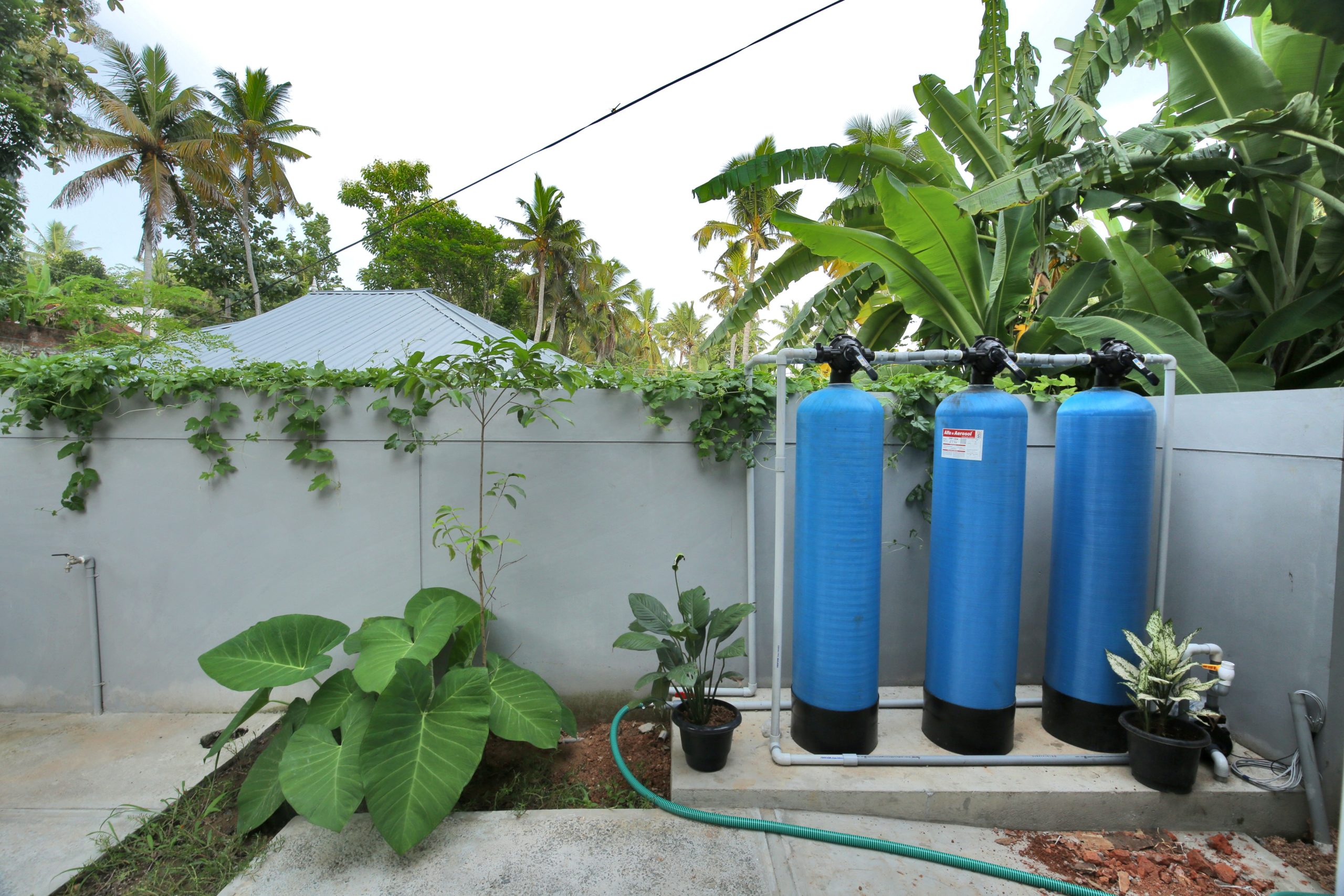
There is also a biogas unit located in the backyard. The organic waste is converted into biogas and used in cooking.
Also Read: Pune Couple Builds Cement-Free Breathable Homes That Don’t Need ACs or Fans!
“The owner was very particular about needing eco-friendly elements in his home. In fact his ideas for solar net zero energy, biogas and water recharge requirements needs to be well appreciated by the larger society,” he says.
Moreover, it’s good practice and realistically reduces the running cost of the house. Who doesn’t want that?
(You can reach Srijit Srinivas here.)
(Edited by Saiqua Sultan)
Like this story? Or have something to share? Write to us: [email protected], or connect with us on Facebook and Twitter.
If you found our stories insightful, informative, or even just enjoyable, we invite you to consider making a voluntary payment to support the work we do at The Better India. Your contribution helps us continue producing quality content that educates, inspires, and drives positive change.
Choose one of the payment options below for your contribution-
By paying for the stories you value, you directly contribute to sustaining our efforts focused on making a difference in the world. Together, let’s ensure that impactful stories continue to be told and shared, enriching lives and communities alike.
Thank you for your support. Here are some frequently asked questions you might find helpful to know why you are contributing?


This story made me
-
97
-
121
-
89
-
167











